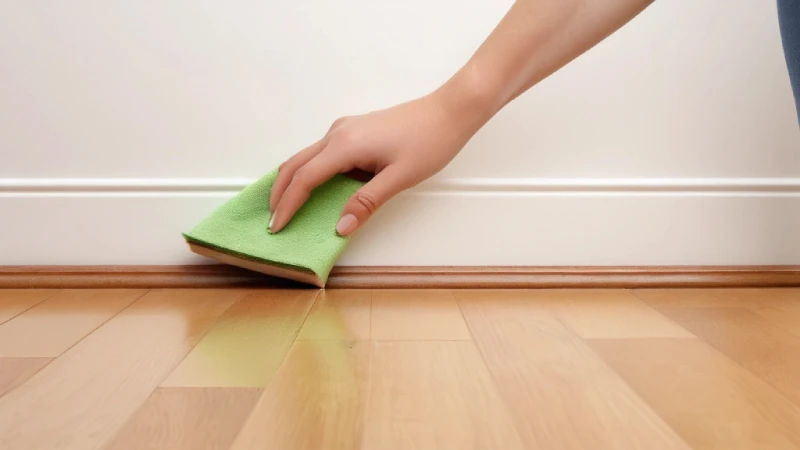Learn how to clean woodwork like a pro with our comprehensive guide. Discover effective tips and techniques for cleaning baseboards, cabinets, and more.
Keep your wooden surfaces sparkling clean and well-maintained.

Table
of Contents

The Best Way to Clean Woodwork
Is your woodwork looking dull and lackluster? Don’t despair! Restoring the beauty and warmth of your woodwork is easier than you might think.
With just a few simple steps, you can transform your home’s interior and bring back the shine to your cherished pieces.
We walk you through the process of cleaning various types of woodwork.
The Timeless Elegance of Woodwork: A Brief History and Significance
Woodwork has been an integral part of human dwellings for centuries, adorning homes with its natural beauty and warmth.
From intricate carvings in ancient temples to the elegant moldings in Victorian mansions, wood has always held a special place in interior design.
Step 1: Know Your Woodwork and Gather Your Arsenal
Before you dive in, it’s crucial to identify the type of finish on your woodwork. Is it painted, varnished, stained, or natural? Each finish requires specific care to avoid damage and ensure optimal cleaning results.
- Painted Woodwork: Gather a mild dish soap, warm water, soft cloths, and an all-purpose cleaner for tougher stains.
- Varnished Woodwork: Prepare a solution of diluted dish soap or a commercial wood cleaner, along with soft cloths and a microfiber cloth for drying.
- Stained Woodwork: Dampen a soft cloth with water and have a wood-specific cleaner on hand for stubborn spots.
- Natural Woodwork: Use a damp cloth with a touch of oil soap for gentle cleaning.
Tip: Always test your cleaning solution on an inconspicuous area first to ensure it doesn’t damage the finish.
DIY Wood Cleaning Solutions: Harnessing the Power of Nature
For those who prefer natural alternatives, your pantry might hold the key to sparkling woodwork. Here are a few DIY cleaning solutions:
- Vinegar and Water: A mixture of equal parts white vinegar and water can be surprisingly effective at cutting through grime and removing light stains.
- Lemon Juice and Olive Oil: Combine the juice of half a lemon with a tablespoon of olive oil for a natural polish that cleans and nourishes the wood.
- Baking Soda Paste: For tougher stains or sticky residue, a paste made of baking soda and water can work wonders.
Step 2: Dust Away the Past
Start by thoroughly dusting your woodwork to remove loose dirt and debris. Pay special attention to crevices, corners, and intricate carvings. A vacuum cleaner with a brush attachment can work wonders for removing dust bunnies and cobwebs.
Step 3: Cleanse and Rejuvenate
Now comes the fun part! Gently wipe down your woodwork with the appropriate cleaning solution for its finish. Work in small sections, applying light pressure and following the grain of the wood. For stubborn grime or sticky residue, a soft-bristled toothbrush or cotton swab can be your secret weapon.
- Removing Nicotine: A mixture of vinegar and water can help cut through nicotine buildup.
- Tackling Grime: For heavy grime, a paste made of baking soda and water can be surprisingly effective.
Step 4: Rinse and Renew
Once you’ve cleaned the surface, it’s essential to rinse away any remaining cleaning solution. Dampen a clean cloth with water and wipe down the woodwork. Dry it immediately with a soft cloth to prevent water damage and streaks.
Step 5: Polish and Protect (Optional)
To enhance the shine and provide an extra layer of protection, consider applying a polish suitable for your woodwork’s finish. This step is optional but can significantly improve the look and longevity of your pieces.
Remember: Regular dusting and prompt attention to spills can help maintain your woodwork’s beauty and minimize the need for deep cleaning.
Advanced Woodwork Cleaning Techniques: Tackling Tough Challenges
- Watermarks: A gentle rubbing with toothpaste or mayonnaise can often lift watermarks from wood.
- Ink Stains: Try using a cotton ball dipped in rubbing alcohol to remove ink stains.
- Heat Marks: A mixture of equal parts vinegar and olive oil can help fade heat marks.
Remember to test these methods on a hidden area first.
Preventive Care for Woodwork: Protecting Your Investment
To keep your woodwork looking its best, follow these preventive measures:
- Use Coasters and Placemats: Protect surfaces from water rings and heat damage.
- Avoid Direct Sunlight: Prolonged exposure to sunlight can fade and damage wood finishes.
- Dust Regularly: Frequent dusting prevents dirt buildup and keeps your woodwork shining.
Spotlights on Different Wood Types
- Oak: Known for its strength and durability, oak often has a prominent grain pattern. Use a gentle cleaner to avoid scratching the surface.
- Maple: With its smooth texture and light color, maple is prone to showing dirt and fingerprints. Clean it regularly with a damp cloth.
- Cherry: This reddish-brown wood darkens with age. Avoid harsh chemicals that can strip away its natural oils.
- Mahogany: A luxurious wood with a rich color, mahogany requires gentle cleaning and polishing to maintain its luster.
FAQs
Frequently asked questions
Everything you need to know about CleanLifeGuide.com
Still have a questions in mind? contact us directly!
How often should I clean my woodwork?
Dust weekly to prevent build-up, and clean with a damp cloth and mild cleaner monthly. High-traffic areas might need more frequent attention.
Can I use vinegar on all types of woodwork?
While vinegar is a natural cleaner, it’s acidic and can damage certain finishes. Test it discreetly first, or opt for a pH-neutral cleaner to be safe.
What’s the best way to remove water stains from wood?
For light stains, try a gentle mixture of baking soda and water. Deeper stains may require a wood polish or professional help.
How do I get rid of sticky residue on my cabinets?
A mixture of warm water and dish soap usually does the trick. For stubborn residue, try a paste of baking soda and water.
How to Clean Woodwork
Guidelines
Regular Cleaning Routine
By following these comprehensive guidelines and incorporating them into your regular cleaning routine, you can ensure that your woodwork remains a stunning focal point in your home for years to come.
Enhancing the Beauty of Wood
So roll up your sleeves, grab your cleaning supplies, and let’s give your woodwork the love and attention it deserves!

www.cleanlifeguide.com
Resources
Statezny T. How to Clean Wood Cabinets: Do’s and Don’ts. Cabinetcoatings.com. Published March 30, 2021. Accessed May 26, 2024. https://cabinetcoatings.com/blog/how-clean-wood-cabinets